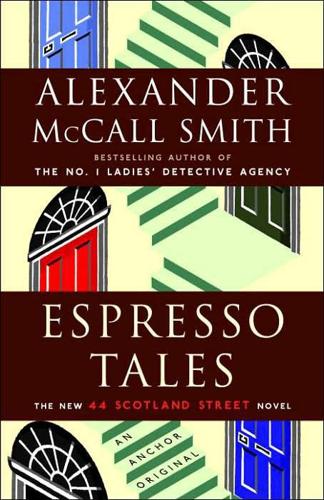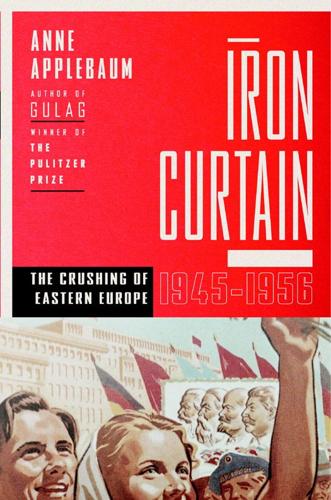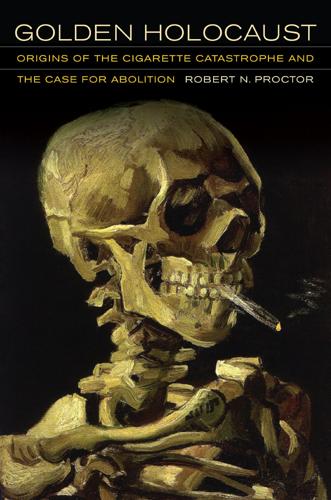
Espresso Tales
by
Alexander McCall Smith
Published 1 Jan 2005
A coquettish twenty-year-old on a first date? And did his father not see how ridiculous it was for a man of his age to be interested in … the carnal? It wasn’t even sex. It was carnality. “Of course there’s the whole language of flowers, isn’t there?” asked Gordon. “Each flower has a meaning, you know, Matthew. Janis knows them all.” Excuse me, Matthew said to himself. I feel nauseated. The language of flowers! Is this really my father speaking? The pillar of the Watsonian Rugby Club? The Rotarian? He listened as Janis began to say something about the symbolism of variegated tulips. He had the opportunity to study her more closely while she talked, and he began to stare at her eyes and then at her chin and neck.
…
“Why should I not be all right about this?” Gordon tried to hold his son’s gaze, but Matthew looked away, down to the floor. “You’re all tensed up,” said Gordon. “Look at yourself. All tensed up. She’s not going to bite you, you know.” “I never said …” Gordon raised a hand. “Here she is.” 46. The Language of Flowers Matthew felt the satisfaction that comes with knowing that one has been right about somebody, at least in anticipating appearance. He had imagined Janis to be blonde, and she was certainly that. He had thought of her as petite, and again he was right. It was true that he had not envisaged her mock endangeredspecies shoes, but that was simply because when picturing her he had not got as far as the feet.
…
The Ramsey Dunbarton Story: Part 1 – Early Days 38. The Ramsey Dunbarton Story: Part 2 – Courting Days 39. The Ramsey Dunbarton Story: Part 3 – Further Highlights 40. Bertie’s Plan Is Launched 41. Irene’s Plan for Bertie 42. Bertie Escapes! 43. Rugby! 44. Going Back 45. Dinner with Father 46. The Language of Flowers 47. Information 48. Private Papers 49. Australian Memories 50. A Trip to Glasgow in the Offing 51. On the Glasgow Train, a Heart Is Opened 52. Arriving in Glasgow 53. Lard O’Connor 54. A Game of Cards and a Cultural Trip 55. At the Burrell 56. Domenica Meets Pat 57. The Natural Approach 58.

The Pineapple: King of Fruits
by
Francesca Beauman
Published 22 Feb 2011
The flavour of the pineapples growing within, was very powerful and agreeable, but an approach to the tables, for seeing the pines, we found, in consequence of the crowds, entirely impracticable.’39 Such shows undoubtedly encouraged the competitive instincts of those involved, much to the advantage of the pineapple, whose cultivation reached ever-increasing heights of perfection. In the 1830s in the language of flowers, the pineapple came to signify, ‘You’re perfect’.40 In this way, the Victorians found a way to codify a cultural association that had in fact been tacit for centuries. In 1839 R. Glendinning asserted that, ‘The Pine apple has for a number of years justly become the most conspicuous article at the Dessert, and at all assemblies of the noble and the rich a most indispensable luxury.’41 One of the most prominent stages on which the pineapple appeared was at public banquets such as one in the Guildhall in York on 2 November 1850, where it was much in demand to perform to rapturous audiences – herein lay yet another chance for it to seduce a much wider range of people than ever before both in terms of numbers and class.
…
According to Hans Christian Andersen, who visited the hothouses while he was staying with Dickens in 1857, they were ‘in such luxuriant spendour as I had never before witnessed’. The Eclectic Magazine of Foreign Literature (February 1871) 183. 38 Gardener’s Chronicle (2 January 1847) 3. 39 Diary of Harriet White Paige (June 1839) in CD-Rom North American Women’s Letters and Diaries (2001). 40 Beverly Seaton, Language of Flowers (1995) 188. 41 Practical Hints (1839) 1. 42 Kathryn Cave (ed.), The Diary of Joseph Farington (1984) VII. 2622, 2635 & 2794; VIII. 3111; X. 3531; XII. 4372 & 4405. 43 Ibid. XII. 4372. 44 Ibid. VIII. 3111. 45 Henry Phillips, Pomarium Britannicum (3rd edn, 1823) 291. 46 Gardener’s Chronicle (28 October 1843) 759. 47 Ibid. (11 November 1843) 787. 48 Quoted in Asa Briggs, The Age of Improvement (1979) 472. 49 Gardener’s Chronicle (6 January 1844) 8. 50 Thanks to Simon R.

Seeds of Hope: Wisdom and Wonder From the World of Plants
by
Jane Goodall
Published 1 Apr 2013
I have not been able to discover how this custom originated—I suppose it means different things to different mourners. I was enchanted to learn that in Victorian Britain, when some feelings could not be openly spoken of, the “language of flowers” (floriography) was highly developed. By sending particular flowers, or combinations of flowers, it was possible to send almost any message—and many floriography dictionaries were published. This language of flowers apparently originated in Turkey and spread to many different countries. Even today some flowers are still associated with certain feelings—any woman receiving a bouquet of red roses knows exactly what a man is telling her!

Iron Curtain: The Crushing of Eastern Europe, 1945-1956
by
Anne Applebaum
Published 30 Oct 2012
“It was my dream job,” he told me.55 Chapter 17 PASSIVE OPPONENTS The time had now come when we must listen with devoted expressions to Soviet orders, smiling only with the wrinkles in our bottoms, under our trousers, as did the lackeys of the Byzantine emperors. Heroic gestures would be of no avail; we would have to speak the language of flowers, be patient and cunning, as we had been under Hitler. The essential thing was to survive. —György Faludy, paraphrasing Jan Masaryk, 19461 A thing is funny when it upsets the established order. Every joke is a tiny revolution. —George Orwell BY 1950 OR 1951, it was no longer possible to identify anything so coherent as a political opposition anywhere in Eastern Europe.

Golden Holocaust: Origins of the Cigarette Catastrophe and the Case for Abolition
by
Robert N. Proctor
Published 28 Feb 2012
These are after all nimble, agile entrepreneurs, with years of experience turning lemons into lemonade. 7 Parties, the Arts, and Extreme Expeditions The unlit cigarette was a tease, the cigarette held near a flame was a provocation, the cigarette stuck behind an ear was a promissory note, the cigarette held aloft was a sheathed knife, the cigarette held laterally was a broken arrow, the cigarette stubbed out was an ultimatum. It was like the language of flowers, or postage stamps. . . . It all resided in the beholder and the beheld, of course. LUC SANTE, NO SMOKING, 2000 Sport has long been a tobacco target, but the same holds true for many other kinds of events where people gather—especially the young. Which is why a decision was made to sponsor festivals and parties, beginning especially in the 1970s and 1980s.